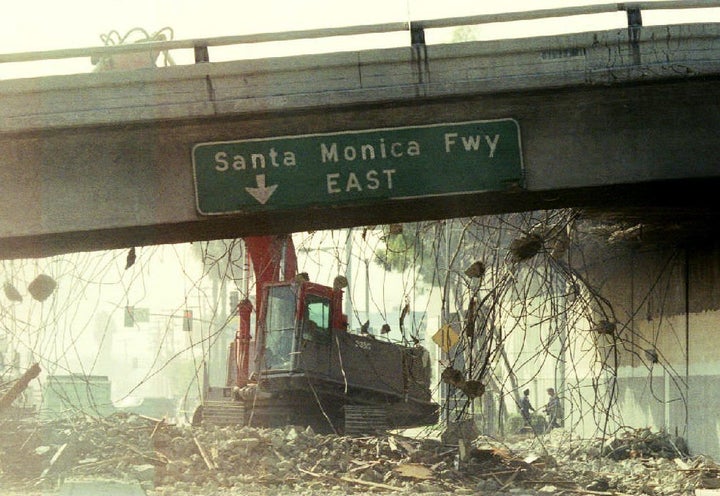
This story comes courtesy of California Watch.
By Susanne Rust
In just the past year, three major earthquakes have rocked the Pacific Plate.
There was last week’s 9.0 temblor off the cost of Japan; the February quake that toppled Christchurch, New Zealand; and the magnitude 8.8 that shook Chile last year.
If you were to look at the Pacific Plate as if it were a square, you’d notice that those three quakes mark three of its corners.
Which leaves one corner untouched.
And some are now wondering if that fourth corner – running from British Columbia to Southern Columbia – is about to go.
"It is as though the earth becomes like a great brass bell, which when struck by an enormous hammer blow on one side sets to vibrating and ringing from all over,” wrote Simon Winchester, the author of "Krakatoa" and "A Crack in the Edge of the World," in the March 13 edition of Newsweek.
“Now there have been catastrophic events at three corners of the Pacific Plate – one in the northwest, on Friday; one in the southwest, last month; one in the southeast, last year. That leaves just one corner unaffected – the northeast. And the fault line in the northeast of the Pacific Plate is the San Andreas Fault, underpinning the city of San Francisco."
But is there any science to suggest that these quakes are related? Or that those three other quakes spell impending doom for the United States’ West Coast?
Apparently, it depends who you ask.
Andrew Michael, a geophysicist with the United States Geological Society in Menlo Park, said there was no statistical evidence indicating that earthquakes occur in clusters. Yes, clusters of aftershocks occur within a geographical region after a major earthquake – but not beyond.
Others disagree.
“This period absolutely seems anomalous, and there appears to be at least one other time period in history ... of very large earthquakes,’’ Colleen Dalton, a seismologist and earth sciences professor at Boston University, told the Boston Globe. “But without more data, I’m not sure we can say if it’s more than just a coincidence.’’
Between 1946 and 1964, there was a cluster of large earthquakes around the Pacific Plate. It ended with the magnitude 9.2 Alaskan earthquake.
John Rundle, a UC Davis geologist agreed with Dalton.
He said the clustering of such large earthquakes in such a short period of time is unusual.
If you add in the 2004 and 2005 earthquakes in Sumatra – both over 8.6 in magnitude – it becomes even more apparent.
"The question is, is it so unusual that these things are causal? We don't know that, but we used to believe that these things were independent and you would see random clustering, but this has become so pronounced that you have to think there might be some correlation to it," Rundle told MSNBC. "In fact, most of our models that we use do show correlations of earthquake events."
But even if they aren’t related, and even if they don’t have any relevance to the Pacific Northwest, the fault lines along this rim of the Pacific Plate are due for a rupture.
For instance, the last large event along the San Andreas fault in Southern California was in 1847. And research indicates that fault slips every 160 years.
Same with the Cascadia fault, which runs along the coast north from Crescent City to British Columbia. According to geologists, that fault ruptures every 500 years. And the last big one there was in 1700.